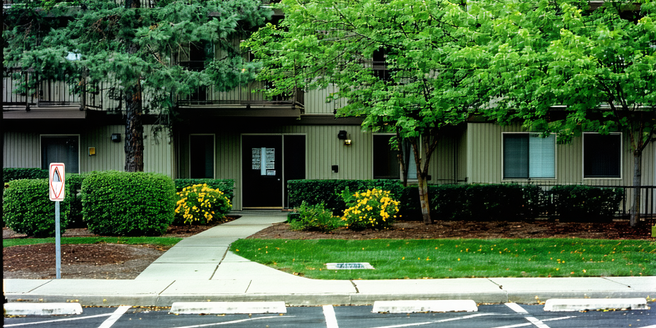Apartment Parking Options Explained

1. On-Site Reserved Parking Spots
On-site reserved parking spots offer unparalleled convenience for apartment residents. These designated spaces are typically located within the apartment complex premises, ensuring quick and easy access to vehicles. Reserved parking eliminates the daily stress of searching for a spot after a long day. Many apartment complexes charge an additional fee for reserved parking, reflecting the added value of convenience and security. Some spots may be covered or even include features like electric charging stations. However, the cost might be a deterrent, leading residents to weigh the benefit against their budget constraints. It’s also crucial to comply with the apartment’s parking rules to avoid fines. Reserved parking is a desirable feature for anyone seeking hassle-free vehicle access right at their doorstep.
2. Underground and Garage Parking Solutions
Underground and garage parking solutions provide a sheltered environment, protecting vehicles from weather conditions such as rain, snow, and sun damage. These facilities often enhance security, reducing the risk of theft or vandalism. Convenient elevator access to living units is a significant advantage offered by these options. Some garages may feature advanced amenities like bike racks or car washes. Although these solutions typically come with higher fees, many find them worth the investment for improved safety and vehicle upkeep. It’s important to follow guidelines like speed limits and directional signs to maintain order and safety within the facility. Overall, underground and garage parking solutions offer peace of mind and convenience that is attractive to many apartment dwellers.
3. Pros and Cons of Street Parking
Street parking, while widely available and often free, comes with its own set of challenges. The primary advantage is cost savings, as you avoid additional parking fees. However, finding a spot can be competitive, especially in densely populated urban areas. Street parking lacks the security features of other options, leaving vehicles more susceptible to damage or theft. Additionally, weather conditions can directly impact parked vehicles, causing wear and tear over time. Residents may need to navigate parking restrictions, such as time limits or street cleaning schedules, to avoid fines. Despite these drawbacks, street parking remains a viable option for those looking to minimize expenses, offering flexibility and accessibility in many neighborhoods.
4. Understanding Permit Parking Systems
Permit parking systems are designed to manage street parking in busy areas, offering reserved spaces for local residents and businesses. To access these spots, residents need to apply for a permit, typically issued by the local municipality. Permits help ensure that parking is available for those who live or work in the area, reducing competition with non-residents. The cost of permits can vary, and there may be specific eligibility requirements or application processes to follow. Residents must adhere to posted signs and regulations to avoid fines. While permit systems offer a structured parking solution, they can also limit flexibility, as parking is restricted to designated areas. Understanding the local permit system is essential to leveraging this parking option effectively.
5. Shared Parking Arrangements
Shared parking arrangements involve the utilization of underused parking spaces by multiple entities or individuals, optimizing available space. This approach is common in urban areas where parking demand fluctuates by time and day. Examples include sharing spaces between residential complexes and nearby businesses, or utilizing office parking on weekends. Shared arrangements can reduce the need for constructing additional parking facilities, promoting sustainability. Coordination and communication between parties are key to successful implementation, ensuring clarity on access times and rights. However, potential issues like overuse or miscommunication need to be addressed to avoid disputes. For residents, shared parking can provide additional options without the high costs typically associated with city parking solutions.
6. Alternative Parking Options Nearby
Alternative parking options nearby offer solutions for residents who may not have sufficient parking within their apartment complex. These alternatives include utilizing public parking lots, nearby commercial garages, or partnering with local businesses that offer parking space rentals. Each option comes with its own set of costs and convenience factors, making it important for residents to assess their specific needs and daily routines. Some residents may choose options that offer flexible payment plans or subscription models. It is also worthwhile to consider the distance from the parking location to the apartment, particularly in inclement weather. Exploring alternative parking arrangements can yield cost-effective and convenient solutions to meet everyday parking needs.